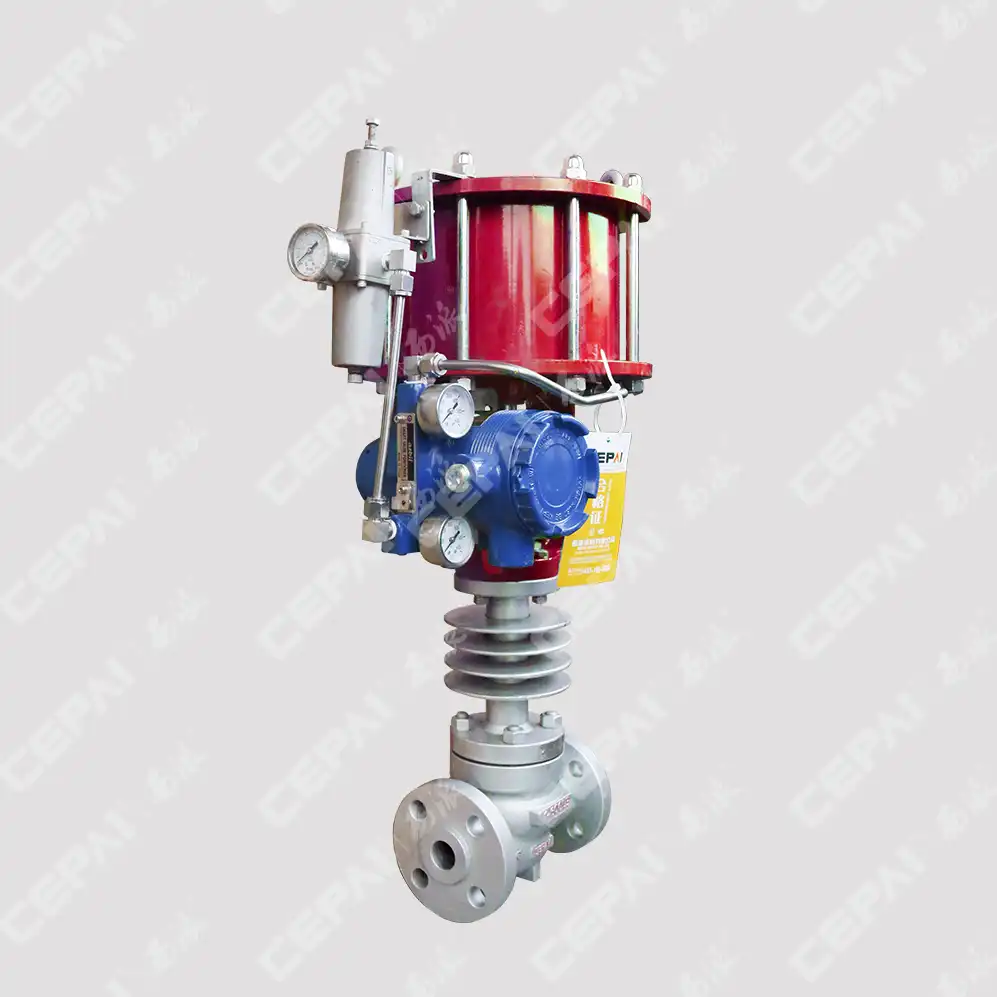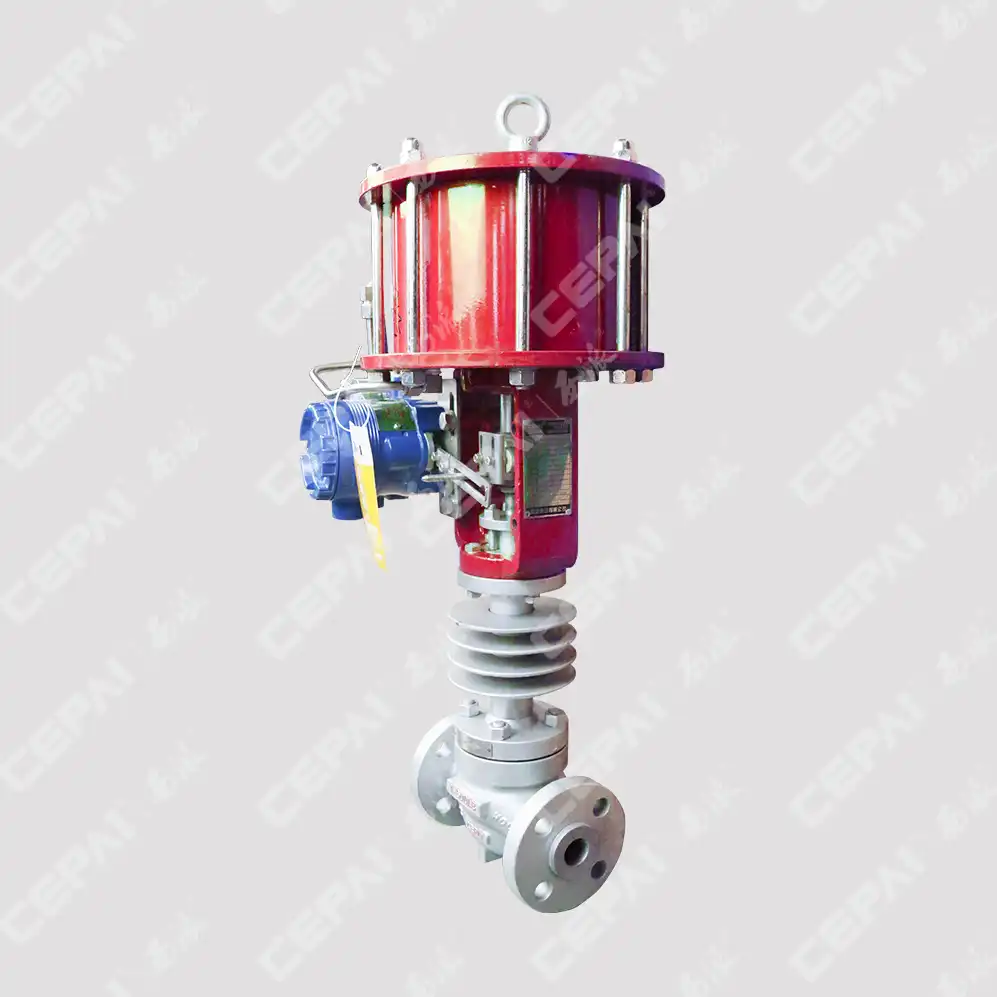Pneumatic Control Valve Price List Cost Breakdown for 2025
Understanding the comprehensive cost structure of pneumatic control valves has become increasingly critical for industrial procurement professionals in 2025. As market dynamics continue to evolve with technological advancements and changing raw material costs, the Pneumatic Control Valve pricing landscape reflects a complex interplay of manufacturing precision, regulatory compliance, and performance specifications. This detailed analysis provides essential insights into current market pricing trends, helping buyers make informed decisions while balancing quality requirements with budget constraints. The comprehensive breakdown presented here encompasses all major cost components that influence the final pricing of Pneumatic Control Valve systems across different industrial applications and specifications.
Key Factors Influencing Pneumatic Control Valve Pricing in 2025
Manufacturing Material Costs and Quality Standards
The foundation of Pneumatic Control Valve pricing lies in the selection and quality of raw materials used in manufacturing. Premium-grade stainless steel, carbon steel, and specialized alloys constitute the primary material components, with costs varying significantly based on global commodity markets. The manufacturing process for Pneumatic Control Valve systems requires precision-engineered components including valve bodies, actuators, and control mechanisms, each demanding specific material properties to ensure long-term reliability and performance. Advanced metallurgical treatments and surface finishing processes add substantial value to the final product, as these treatments directly impact the valve's resistance to corrosion, wear, and extreme operating conditions. Quality certifications such as ISO 9001, API standards, and specialized industry requirements further influence material selection and processing costs, as manufacturers must invest in premium materials and rigorous testing protocols to meet these stringent standards.

Design Complexity and Engineering Specifications
The engineering complexity of Pneumatic Control Valve systems significantly impacts pricing structures, as customized solutions require extensive design and development resources. Advanced control algorithms, precision manufacturing tolerances, and integration capabilities with modern industrial automation systems demand sophisticated engineering expertise and specialized manufacturing equipment. The development of Pneumatic Control Valve products involves comprehensive computational fluid dynamics analysis, stress testing, and performance optimization to ensure optimal flow characteristics and operational reliability under varying pressure and temperature conditions. Customization requirements, including specific port configurations, actuator sizing, and control interface compatibility, add considerable engineering costs to the base product pricing. Additionally, compliance with industry-specific regulations and safety standards requires extensive documentation, testing, and certification processes that contribute to the overall cost structure of Pneumatic Control Valve systems.
Advanced Manufacturing Technologies and Production Efficiency
Modern manufacturing techniques employed in Pneumatic Control Valve production incorporate advanced CNC machining, precision casting, and automated assembly processes that significantly influence cost structures. The implementation of Industry 4.0 technologies, including IoT-enabled production monitoring and predictive maintenance systems, represents substantial capital investments that manufacturers must recoup through product pricing. High-precision manufacturing equipment capable of maintaining tight tolerances essential for Pneumatic Control Valve performance requires ongoing maintenance, calibration, and operational expertise, contributing to manufacturing overhead costs. The adoption of lean manufacturing principles and continuous improvement methodologies helps optimize production efficiency, though initial implementation costs and ongoing training requirements impact short-term pricing strategies. Quality control systems incorporating advanced testing equipment and comprehensive inspection protocols ensure product reliability but add measurable costs to the manufacturing process.
Detailed Price Range Analysis for Different Valve Categories
Standard Industrial Grade Pneumatic Control Valves
Standard industrial applications utilize Pneumatic Control Valve systems designed for reliable performance in typical operating conditions, with pricing generally ranging from $800 to $3,500 per unit depending on size and specifications. These valves feature robust construction suitable for general process control applications, incorporating proven actuator technologies and standard control interfaces that balance performance with cost-effectiveness. The Pneumatic Control Valve category includes globe valves, ball valves, and butterfly valves manufactured to industry standards with typical pressure ratings from 150 to 600 PSI and temperature ranges suitable for most industrial processes. Standard configurations offer limited customization options, focusing on proven designs that minimize manufacturing complexity while maintaining reliable performance characteristics. Bulk purchasing opportunities and standardized specifications contribute to more competitive pricing in this segment, making these Pneumatic Control Valve solutions attractive for budget-conscious applications requiring dependable automation capabilities.
High-Performance Specialty Pneumatic Control Valves
Specialty applications requiring enhanced performance characteristics drive demand for premium Pneumatic Control Valve systems priced between $4,000 and $12,000 per unit, reflecting advanced engineering and specialized manufacturing requirements. These valves incorporate sophisticated materials, precision manufacturing processes, and advanced control technologies designed for demanding operating conditions including high pressures, extreme temperatures, and corrosive environments. The Pneumatic Control Valve designs in this category often feature specialized trim materials, advanced sealing technologies, and enhanced actuator capabilities that provide superior control accuracy and extended service life. Applications in petrochemical processing, pharmaceutical manufacturing, and specialized industrial processes require these premium valve solutions that justify higher pricing through improved performance, reduced maintenance requirements, and enhanced operational reliability. The engineering complexity and specialized manufacturing requirements for these Pneumatic Control Valve systems necessitate longer lead times and higher production costs that directly impact pricing structures.

Custom Engineered and Critical Service Applications
Critical service applications and highly customized requirements command premium pricing for Pneumatic Control Valve systems, typically ranging from $15,000 to $50,000 or more per unit, depending on complexity and specifications. These applications require extensive engineering analysis, specialized materials, and rigorous testing protocols to ensure reliable performance in mission-critical processes where valve failure could result in significant safety or economic consequences. The Pneumatic Control Valve designs for critical service incorporate redundant safety features, advanced diagnostic capabilities, and specialized materials designed to withstand extreme operating conditions over extended service intervals. Comprehensive documentation packages, including detailed material certifications, performance test results, and maintenance procedures, add substantial value to these premium valve solutions. The engineering resources required for custom Pneumatic Control Valve development, including computational analysis, prototype testing, and validation procedures, represent significant investments that contribute to higher pricing levels for these specialized applications.
Cost Optimization Strategies and Total Ownership Considerations
Lifecycle Cost Analysis and Maintenance Planning
Effective cost management for Pneumatic Control Valve procurement requires comprehensive lifecycle cost analysis that considers initial purchase price, installation costs, maintenance requirements, and expected service life. The total cost of ownership for Pneumatic Control Valve systems includes energy consumption, routine maintenance, spare parts availability, and potential downtime costs associated with valve failures or maintenance activities. Preventive maintenance programs designed specifically for pneumatic actuators and control valve components can significantly reduce unexpected repair costs and extend service life, providing favorable return on investment over the valve's operational lifetime. Understanding the relationship between initial valve quality and long-term maintenance requirements helps buyers evaluate the true value proposition of different Pneumatic Control Valve options, as higher-quality products often provide lower total ownership costs despite higher initial purchase prices. Comprehensive maintenance planning, including spare parts inventory management and scheduled service intervals, ensures optimal performance while minimizing unexpected costs throughout the valve's service life.
Supplier Selection and Partnership Benefits
Strategic supplier relationships significantly impact Pneumatic Control Valve procurement costs through volume discounts, technical support services, and collaborative engineering assistance. Established manufacturers with proven track records offer comprehensive support services including application engineering, installation guidance, and ongoing technical assistance that add substantial value beyond the initial product purchase. The selection of qualified Pneumatic Control Valve suppliers with appropriate certifications, quality management systems, and industry experience ensures reliable product performance while potentially reducing procurement and installation costs through streamlined processes. Long-term partnerships with reputable valve manufacturers often provide access to competitive pricing, priority support services, and collaborative product development opportunities that benefit major industrial projects requiring multiple valve installations. Comprehensive supplier evaluation criteria should include manufacturing capabilities, quality certifications, technical support resources, and long-term financial stability to ensure reliable supply and support throughout the valve's operational life.
Technology Integration and Future-Proofing Considerations
Modern industrial automation trends toward digitalization and smart manufacturing require Pneumatic Control Valve systems with advanced communication capabilities and diagnostic features that may command premium pricing but provide substantial operational benefits. The integration of digital communication protocols, predictive maintenance capabilities, and remote monitoring features in Pneumatic Control Valve systems offers significant value through improved operational efficiency and reduced maintenance costs. Investment in advanced valve technologies that support Industry 4.0 initiatives provides long-term benefits through enhanced process control, reduced energy consumption, and improved safety performance that justify higher initial costs. Future-proofing considerations for Pneumatic Control Valve procurement include compatibility with emerging automation standards, upgrade pathways for control systems, and adaptability to changing process requirements that may evolve over the valve's service life. The evaluation of technology integration costs should consider both immediate implementation requirements and long-term strategic benefits to ensure optimal return on investment for advanced valve control solutions.
Conclusion
The Pneumatic Control Valve pricing landscape for 2025 reflects a sophisticated balance between manufacturing costs, technological advancement, and application-specific requirements. Understanding the comprehensive cost structure enables informed procurement decisions that optimize both initial investment and long-term operational value. The evolution toward smart, connected valve solutions continues to drive innovation while maintaining focus on fundamental reliability and performance characteristics that define quality Pneumatic Control Valve systems.
At CEPAI Group, we leverage our exceptional durability standards, high-precision control performance, and continuous R&D investment to deliver innovative Pneumatic Control Valve solutions that exceed industry expectations. Our comprehensive approach combines cutting-edge technology with proven reliability, supported by extensive patents and technological barriers that ensure competitive advantages for our clients. With our rich product range and dedicated pre-sales technical support, we provide customized solutions backed by comprehensive after-sales service guarantees and industry-leading certifications. Our commitment to quality excellence through strict ISO quality system implementation ensures that every Pneumatic Control Valve meets the highest standards of performance and reliability. We understand that choosing the right valve partner is crucial for your project success, and we invite you to experience the CEPAI difference through our expert consultation services and tailored solutions. Contact our technical team today at cepai@cepai.com to discuss your specific requirements and discover how our advanced Pneumatic Control Valve technologies can optimize your operations while delivering exceptional value and performance.
References
1. Industrial Valve Market Analysis and Pricing Trends, Journal of Process Control Engineering, 2024
2. Pneumatic Actuator Technology Advances and Cost Implications, Automation Technology Review, 2024
3. Global Valve Manufacturing Cost Analysis, International Industrial Equipment Quarterly, 2024
4. Advanced Materials in Valve Construction: Performance vs. Cost Trade-offs, Materials Engineering Journal, 2024
5. Lifecycle Cost Optimization for Industrial Control Valves, Process Industry Economics, 2024
6. Smart Valve Technology Integration and ROI Analysis, Industrial Automation Today, 2024

Get professional pre-sales technical consultation and valve selection services, customized solution services.

About CEPAI


